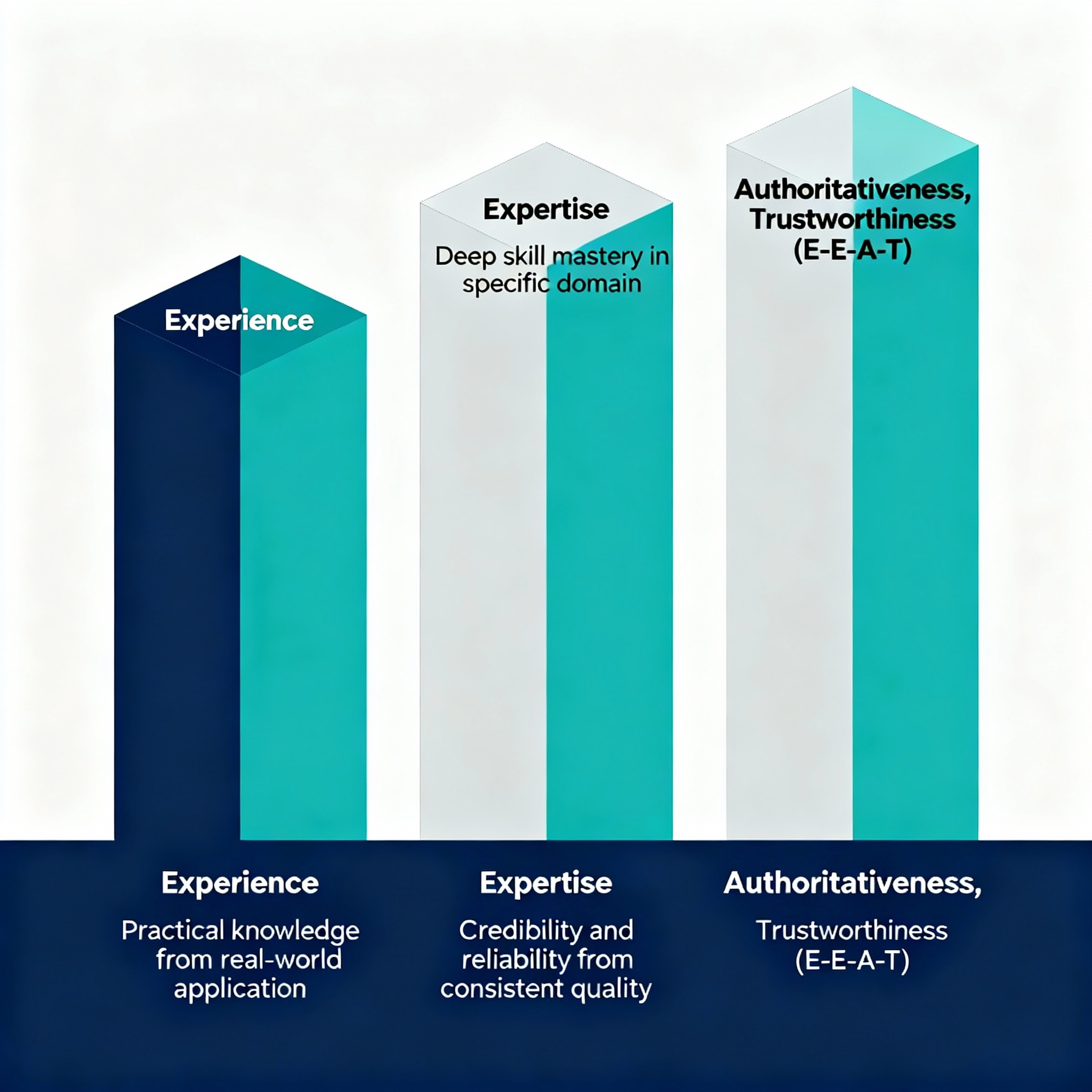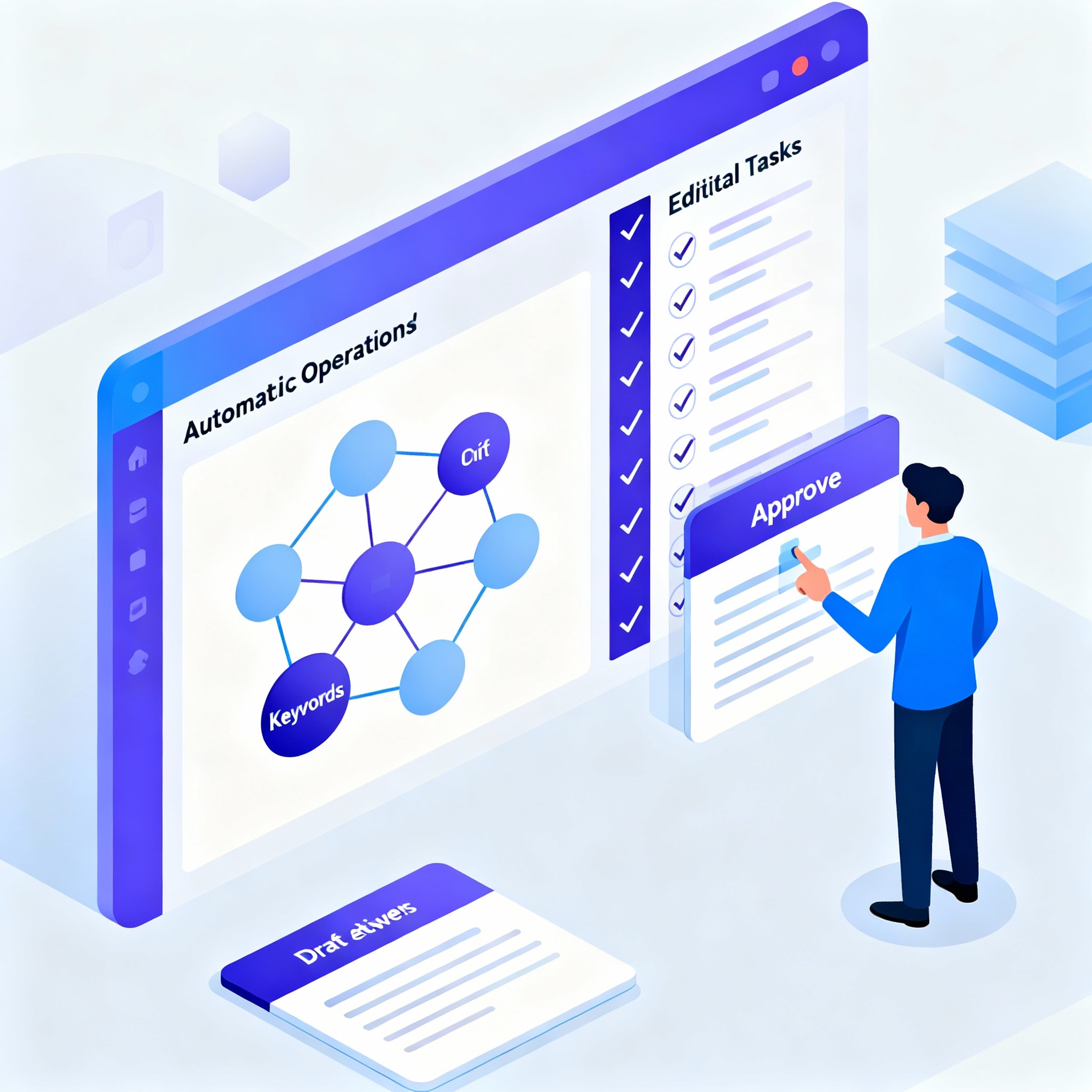Google AI Content Guidelines Summary is the one-line truth every website owner, SEO company, and content marketer needs right now: Google does not ban AI content, but it will filter out anything created mainly to game search. That distinction matters if you are building content on Day 10 of an early stage business, or if you run a digital agency automating blog production, because quality, transparency, and user value are the deciding factors.

What Google AI Content Guidelines Summary Means For You
Here is the thing, you can use AI to create content, but you must treat it like any other tool in the content workflow. Google’s guidance tells creators to focus on people first, explain who made the content, and be clear how automation was used when it would reasonably be expected. For actionable reading, see Google Search Central’s guidance about creating helpful, reliable, people-first content.
Key takeaways from Google for content teams:
- Produce original value, not shallow rehashes of other pages. Google Search Central: Creating helpful, reliable, people-first content.
- If automation or AI played a major role, consider a disclosure or byline that clarifies the how. Google documentation recommends transparency about automation.
- AI content intended primarily to manipulate rankings, at scale, risks being treated as spam under Google’s updated policies. See Google’s March 2024 core update and spam policy changes.
Why This Changed The Playbook
Google’s systems now emphasize helpfulness, trust, and clear signals of experience and expertise, often summarized under E-E-A-T. The March 2024 core update clarified that scaled abuse, whether human or machine assisted, is treated as spam when the goal is ranking manipulation rather than helping people. That means automated content factories that publish thin articles to chase keywords are on notice. Google Search Central explained the update and new spam policies.
What Google Looks For Today
- Evidence of real-world experience and first-hand knowledge.
- Clear authorship and information about how content was produced when relevant.
- Substantial original analysis, reporting, or utility beyond summarizing sources.
- Content that satisfies user intent and leaves the reader with a complete answer.
How To Use AI Without Getting Penalized
Here’s a practical checklist you can adopt the same day you set up your content pipeline.
- Start with audience intent, not keyword lists. Map the questions your audience actually asks.
- Use AI to draft, then add human expertise. Edit for accuracy, voice, and examples only humans can add.
- Add bylines, author bios, and methodology notes when automation was significant. This builds trust and aligns with Google’s “Who, How, Why” framework. Google: Who, How, and Why guidance.
- Avoid large-scale churn of low-value pages. Focus on fewer, higher-value pieces.
- Use structured data where appropriate, but don’t rely on it to replace real quality. Google’s structured data and rich results guidance provides best practices.
Quick Workflow Example For Agencies
- Research intent and core questions via Search Console queries.
- Prompt AI for a concise draft and an outline of sources.
- Add a human review step: verify facts, add proprietary tips, and include tests or case data.
- Publish with author attribution and a short note on automation if used heavily.
- Monitor performance and iterate.
Automation Opportunities That Stay Safe And Useful
If you are a website owner or SEO company, automation can save hours when used correctly. Here are automation ideas that reduce manual work while still meeting Google’s guidance:
- Topic and keyword research automation that surfaces intent clusters for human writers.
- Outline generation, with humans filling in examples and citations.
- Meta title and description drafts that a human edits for brand voice.
- Content audits and gap analysis, using AI to flag pages needing updates.
WordPress automation plugins and SEO suites can help, but always put human review in the critical path. Tools that publish large volumes without oversight are exactly what Google’s updated spam policies intend to catch. Google’s advice on avoiding search-engine-first content explains this clearly.

AEO, SEO, And GEO: Where AI Fits
- AEO, or Answer Engine Optimization, is about structuring content for direct answers and AI summaries, but it still needs substance behind the excerpt.
- Traditional SEO fundamentals remain essential: site health, backlinks, and user engagement signals matter.
- GEO strategies for local content need local expertise and up-to-date facts; AI drafts must be validated.
Google’s AI Overviews and summary features can pull content into AI-generated answers, which may reduce clicks for some pages, so prioritize unique value that earns clicks and links over only optimizing for the answer box. For context on evolving search features, keep an eye on Google’s product and policy notices and independent reporting about how AI features affect publishers. Recent reporting on AI Overviews and publisher concerns is available from Reuters.
Transparency And Verification: The Next Frontier
Google and other companies are building tools to label and detect AI-generated content, and some vendor-specific watermarking is emerging. Being transparent about process, sources, and review is becoming a trust signal. For example, Google announced efforts around SynthID watermarking and detection, which aim to increase provenance for AI-created media. See reporting on Google’s SynthID detection work.
Action Plan For The Next 30 Days
- Audit your top 20 pages for E-E-A-T signals and add author or methodology notes where relevant.
- Stop mass-publishing auto-generated pages without human edits.
- Build a human review checklist for every AI draft: fact check, add proprietary insight, cite sources.
- Add a small site-level disclosure if you use AI systematically, and be prepared to explain your processes to partners and clients.
Conclusion and Next Steps
If your team wants to automate content creation, do it thoughtfully. Use AI to scale research and speed, not to replace the human insights that make content valuable. Follow Google’s people-first guidance, be transparent when automation played a major role, and focus on building trust through authorship and original insight. Want a quick audit checklist I can run for your site, or a template for AI disclosures and author markup? Tell me which you prefer and I will draft it.

